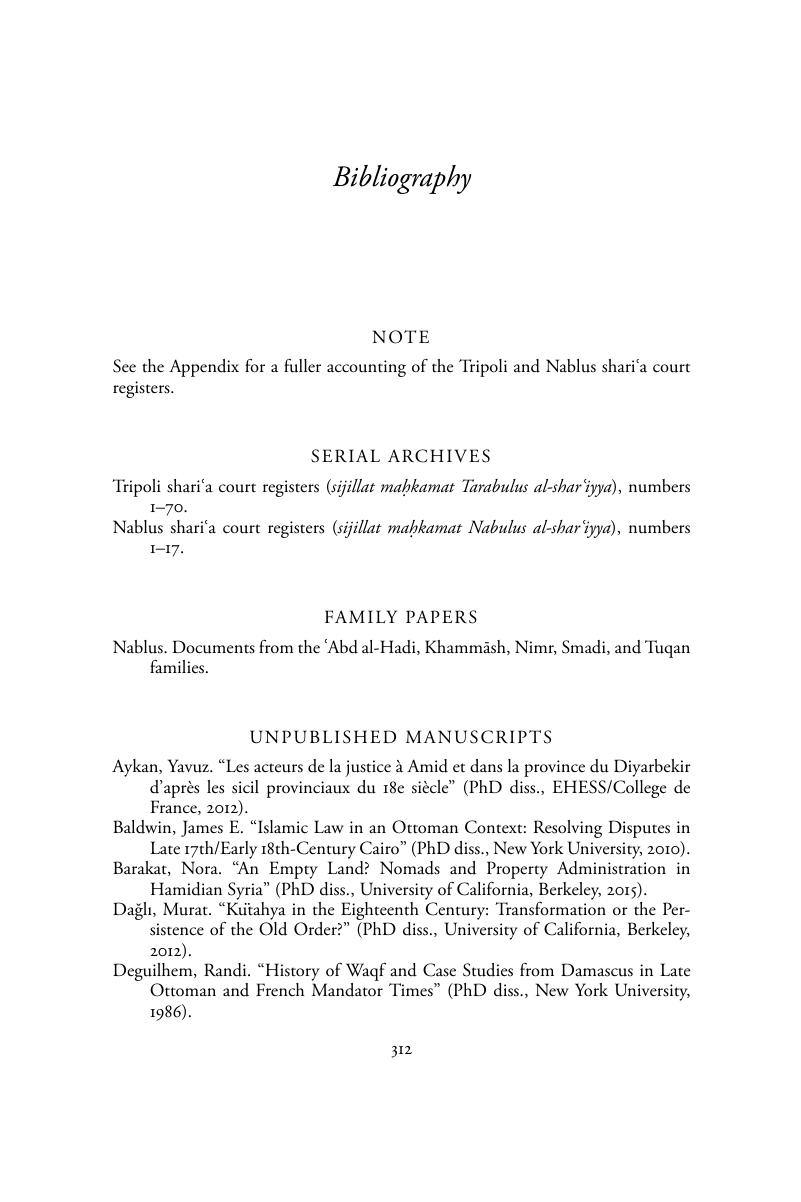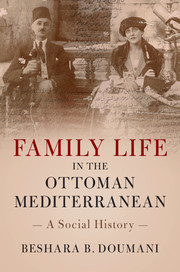Book contents
- Family Life in the Ottoman Mediterranean
- Family Life in the Ottoman Mediterranean
- Copyright page
- Contents
- Figures
- Maps
- Tables
- Preface and Acknowledgments
- Chapter 1 Maryam's Final Word
- Chapter 2 Hamida's Children Come of Age
- Chapter 3 Husayn's and ʿAbd al-Wahid's Designs
- Chapter 4 Good Deeds
- Chapter 5 Who's In? Who's Out?
- Chapter 6 Property and Gender
- Chapter 7 Fatima's Determination
- Appendix Note on the Tripoli Shariʿa Court Registers
- Bibliography
- Index
- References
Bibliography
Published online by Cambridge University Press: 29 June 2017
- Family Life in the Ottoman Mediterranean
- Family Life in the Ottoman Mediterranean
- Copyright page
- Contents
- Figures
- Maps
- Tables
- Preface and Acknowledgments
- Chapter 1 Maryam's Final Word
- Chapter 2 Hamida's Children Come of Age
- Chapter 3 Husayn's and ʿAbd al-Wahid's Designs
- Chapter 4 Good Deeds
- Chapter 5 Who's In? Who's Out?
- Chapter 6 Property and Gender
- Chapter 7 Fatima's Determination
- Appendix Note on the Tripoli Shariʿa Court Registers
- Bibliography
- Index
- References
Summary

- Type
- Chapter
- Information
- Family Life in the Ottoman MediterraneanA Social History, pp. 312 - 332Publisher: Cambridge University PressPrint publication year: 2017



